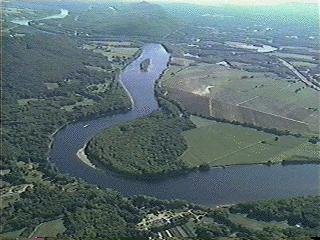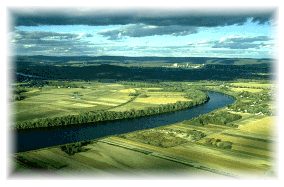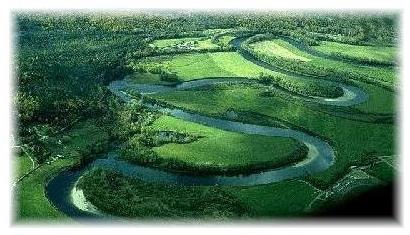WATER and the FLOODING RIVER
Professor Lincoln P.
Brower
|
from
 image source
 image source
The Flooding River was shown countless times to citizen groups up and down the Connecticut Valley, and in 1972 resulted in my receiving an environmental commendation from the Massachusetts Audubon Society. The film then won a major environmental film festival award. To date, not one of the proposed dams has been built on the Connecticut or its tributaries. In 1993 the beautiful West Branch of the Westfield River, one of the tributaries originally proposed to be dammed, was designated a National Wild and Scenic River, one of the few in eastern North America. In 1972, The Flooding River was entered as legal evidence in the Environmental Defense Fund's (EDF) federal suit against the U.S. Army Corps of Engineers. The Corps planned to channelize the Tombigbee River in Alabama and Mississippi, carve through the southern Appalachians, and join the Tombigbee to the Tennessee River, thereby effectively connecting the Gulf of Mexico with the St. Lawrence River. The Tombigbee is geologically the oldest river in the North America and has an extremely high biodiversity of fish, freshwater clams and other key aquatic animal groups and EDF considered it of great environmental significance. Unfortunately, the Corps used an effective maneuver of pitting so-called "equally competent expert witnesses" against each other. The result was that the judge dismissed all scientific testimony in the case. Ecological degradation of Tombigbee proceeded apace. During the course of the Tombigbee trial, there was a destructive flood in Rapid City, South Dakota. As an expert witness I was asked if my position really could be justified, given the economic disaster and loss of life. Little did the seven lawyers who were cross-examining me realize that they had planted the seed for a film sequel. Two days later the seed germinated as the Corps flew me over the devastation along Rapid Creek in a Huey helicopter. It was obvious to me that the flood damage was a man-made result of poor planning and lack of building regulations. Then, in May 1973, the Mississippi River hit its highest historical flood level in St. Louis. I called the Environmental Defense Fund, left with Robie Hubley of The Massachusetts Audubon Society for St. Louis, and our second environmental film, Planning for Floods was assured. I wrote the script and designed the graphics, and EDF hired George Stoney (Professor of Film Science, New York University), to produce Planning for Floods. The film developed the theme that the Corps of Engineers' philosophy of channelization and dam building ultimately promoted greater economic damage and more likely loss of human life by creating a false sense of security, thereby encouraging people to build on "protected" floodplains. Planning for Floods foretold that a larger flood would sooner or later occur, and, as we know, 1993 fulfilled the prediction. Hugh Downs' narration of my script is, almost verbatim, what we are currently hearing on National Public Radio and in the national press about future federal flood control policy. At my request in August 1993, EDF dredged out Planning for Floods (they had forgotten they had made the film, typifying our culture's lack of historical perspective) and by November had re-issued it in video format. On September 16, 1993, Joel Plagenz called from EDF to tell me that he had spoken with Vice President Albert Gore and was "astonished" that the Federal Government is using the language of Planning for Floods in discussing future U.S. flood control policy. Thus, under the current administration, there is a strong call for moving people and businesses out of the floodplain, investing less on new structural flood control projects, and relying more on natural marshes, oxbows, and agricultural fields to absorb and moderate flood flows. If this happens, major environmental and economic benefits should result.
 image source
References:
|
|---|
 CONTENTS
CONTENTS  INTRODUCTION
INTRODUCTION  PURPOSE
PURPOSE  SCHEDULE
SCHEDULE  REQUIREMENTS
REQUIREMENTS  PARTICIPANTS
PARTICIPANTS 
H20 - The Mystery, Art, and Science of Water
Chris Witcombe and Sang Hwang
Sweet Briar College